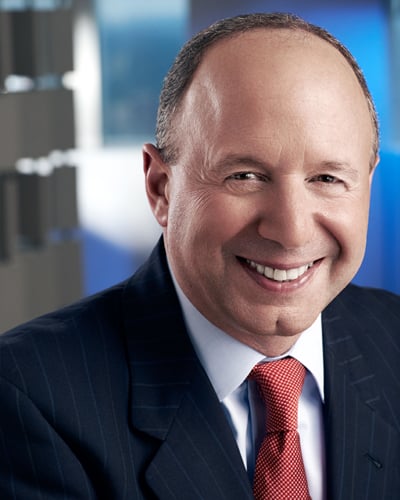On June 27, the SEC took the unprecedented step of ordering the CEOs and CFOs of 945 large publicly-traded companies to certify under oaths as to the accuracy of their recent SEC filings. The certification requirement is designed to provide assurance to the SEC and the public that the companies have not violated their accounting and disclosure obligations under the federal securities laws.
The certifications must be made on or before the first date that a 10-K or 10-Q is required to be filed on or after August 14, 2002. Thus, for example, for a company with a June 30 quarter-end, the certifications would have to be made on or before August 14.
The following questions and answers provide guidance to executives about the procedures for the certification, and things they can do to prepare to make it.
What am I certifying to?
The form of certification, which is attached to the SEC’s order, requires each of the CEO and CFO to make an attestation about the company’s most recent 10-K and any reports on 10-Q or 8-K and definitive proxy materials, filed since the date of the filing of the 10-K up to the date of the certification. Each officer must certify under oath that, to the best of the officer’s knowledge and based upon a review of the covered reports:
-
No covered report contained an untrue statement of a material fact as of the end of the period covered (or in the case of an 8-K or proxy material, on the date filed).
-
No covered report omitted to state a material fact necessary to make the statements in the report, in light of the circumstances under which they were made, not misleading.
In addition, each officer must state whether he or she has reviewed the contents of the certification with the company’s audit committee.
Will these certifications increase the liability of the CEO and CFO?
CEOs and CFOs already sign the 10-K, and the CFO typically signs the 10-Qs (although it is permissible for the chief accounting officer of the company to do so), in all cases “on behalf of” the company. Any authorized officer of the company may sign an 8-K on behalf of the company. Each individual who has signed a filing already faces liability under the Exchange Act if the report contained false and misleading statements. However, if the new certifications, made individually and under oath, prove to have been false when made, the executive will now face separate federal civil and criminal penalties for making false statements under oath. In addition, the SEC can always choose to institute proceedings to bar an individual from serving as an officer of a public company. And, of course, there is a reputational aspect of the certifications. Bottom line: CEOs and CFOs should take this certification very seriously.
What should CEOs and CFOs do to be in a position to make the certification?
The certification must be “based upon a review of the covered reports.” In almost all instances, CEOs and CFOs will have reviewed these reports before they were submitted. However, given the unprecedented nature of the SEC orders, we believe it would be prudent to engage in a process to support and substantiate the oath, and to establish a record of that process. Each company should develop a process that makes sense for its particular circumstances. The following is a process that we believe would be reasonable for many companies:
-
The CEO and the CFO would send a communication to others in the company who had a direct role in preparing the SEC filings, explaining the purpose of the certification. That communication would ask each of the recipients to review the covered filings and the methods and procedures he or she employed to gather and verify the information for which they were responsible, and to be prepared to attend a meeting at which the contents would be reviewed.
-
The internal meeting would include the CEO and CFO, the principal accounting officer, and the general counsel or other legal official responsible for SEC reporting. Others attending the meeting might include, as appropriate, the internal auditor, the principal risk management officer, the chief investor relations officer, and other company officials and division heads. At the meeting, the participants would review the process followed in preparing the reports, and the contents of the filings would be discussed, with particular emphasis on compliance with SEC reporting requirements and accounting policies and critical accounting estimates. Some of the items to be considered might include: off-balance sheet items, contingencies, reserves, revenue recognition, liquidity and capital resources, and material trends. There should be an adequate opportunity for discussion and questions.
-
The CEO, CFO, and other appropriate company officials should also meet with representatives of the independent accountants to discuss their audit and subsequent quarterly reviews.
A record should be made of all of these proceedings to evidence the entire process.
Should the CEO and CFO meet with the audit committee?
While the Order does not require any issues to be addressed by the audit committee, it does require the certification to disclose whether each officer has reviewed the certification with the audit committee. For this reason, the CEO and CFO should meet with the audit committee to discuss the process they undertook to confirm the certification, address any issues identified at the internal meeting and meeting with the auditors, and ask the committee members if they have any questions or comments. A face-to-face meeting is advisable, although a telephonic meeting would suffice. It would not be sufficient to have only a conference with the chairman of the committee. Minutes of the audit committee meeting should be prepared.
Should we deliver the certifications before filing the first 10-K or 10-Q due on or after August 14?
Because the certification is required “no later than” the due date for your next 10-K or 10-Q, it is permissible to file the certifications as soon as possible, and before, for example, the second quarter 10-Q. In that case, the certification would not cover the subsequent filing. Without question, however, companies should take great care with respect to the procedures followed and the senior management review of that subsequent filing, even if the certifications have been delivered and the filing is not technically covered by the certifications.
Can we just file one certification and have each of the officers sign it?
No. The CEO and CFO must each provide separate certifications.
Can we file the certifications by the EDGAR system or attach them to the 10-Q?
No. The order requires that the certifications be “delivered” to Jonathan G. Katz, Secretary at the SEC, in Washington. The company should take steps to insure that the statements are delivered in a timely fashion.
Authors


Stay Up To Date with Ropes & Gray
Ropes & Gray attorneys provide timely analysis on legal developments, court decisions and changes in legislation and regulations.
Stay in the loop with all things Ropes & Gray, and find out more about our people, culture, initiatives and everything that’s happening.
We regularly notify our clients and contacts of significant legal developments, news, webinars and teleconferences that affect their industries.
